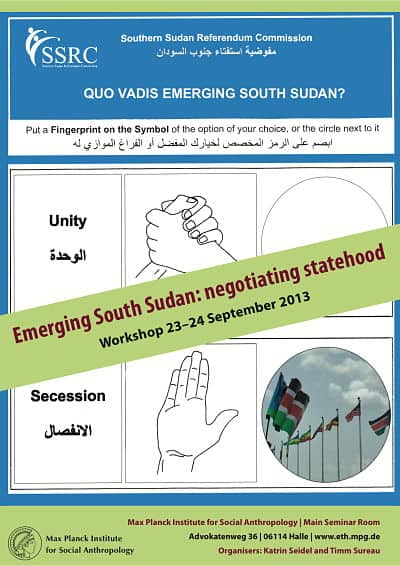Biomedicine and the life sciences continue to rearrange the relationship between culture and biology, problematizing what it means to be a person, and introducing uncertainty and instability to individual and public life. When this occurs, law is often called upon in response. Is this the best option? Why do we always turn to law to deal with ethical tensions or uncertainty in technoscience?
Could an anthropological concept developed to make sense of ritual, structure and agency help us to better understand the profound sociotechnical challenges that continue to redefine life in the age of biobanks, gene and stem cell therapy, and other novel medico-scientific domains?
Liminality refers to a threshold phase characterized by uncertainty, possibility, marginality, and transformation. Above all, liminality is about the human experiences of these phenomena. Early research into liminality helped to better understand the relationship between structure and agency, drawing attention to the connection between transformation and a given society’s underlying organization and values. As temporal and spatial spaces of change, liminal fields are also the sites of and for reflection. In order to develop a mode from examining the relation between biomedicine and law, this event sought to foster novel insights into the value of liminality as an analytical concept.
In order to help us to better engage with technoscientific uncertainty and its productive potential for understanding law, the following questions were put to the four speakers and the audience: How are boundaries and thresholds experienced today? Can we speak of spaces “betwixt and between” technological, biomedical and regulatory fields? What are the benefits and risks of operating or “living” in liminality? Arpad Szakolczai spoke of “permanent liminality” as a characteristic of the Contemporary, a fluid form of sociality in which our base references – law, policy, and social norms – are constantly outmoded by epistemic and technological changes. Paul Stenner offered the notion of “liminal hotspots” to draw attention to the affective dimensions of liminality caused by the interference and overlap of competing social fields. Both of these speakers located the importance of the liminality concept in the focus on process and anti-structure that it offers. Jane Calvert spoke of “Liminal objects and liminal spaces in (the study of) synthetic biology” by reflecting both on the liminal dimensions of nascent biotechnology and her own situatedness in relation to it.
As with the above presentations, Calvert’s talk raised a number of questions about the relation between boundary work and the liminal: If we understand the liminal to be produced and take place at the overlap of different social, political, and / or technical fields, then how is this influenced by the active sharpening or dissolution of the boundaries between, for example, different scientific disciplines like biology and engineering? Equally, what opportunities are lost for the Academy, and policy & law development, when liminal spaces are not created to allow productive interaction and genuine co-production of new possibilities about how we respond to novel technological developments? Overarchingly, as James Conroy discussed, what happens to the liminal when it becomes a centre, a new field in and of itself?
His suggestion was that even when existing liminal spaces disappear in one situation or context, new ones open up elsewhere. Liminality is both ethereal and perpetual.
These contributions, questions, and the lively discussion they provoked, offered a number of new directions for us. As a research team exploring the potential of liminality as a conceptual tool for rethinking current approaches to the regulation of biomedical research, we thought it productive to think through two key lines of enquiry. The first relates to the liminality of novel entities such as the biobricks™ discussed by Jane Calvert, snippets of genetic material that can be bought and sold for the manufacture of synthetic biological circuits to be incorporated into living cells. Are these products not regulated due to their ontology, (their representation) as enclosed biological units with a fixed future as part of a genetic circuit? That is, how does the decision to regulate some entities and not others relate to their ontological status and biological potential? This potentially reveals something about the limits of law, which tends to ‘fix’ regulatory objects – other examples in the biomedical context are “personal data” and “human tissue”.
Liminality suggests that this approach overlooks deeper understandings, both about the objects of regulatory attention, but also about the experiences of subjects who have contributed to the research enterprise.
The second line of enquiry concerns the epistemic spaces in which such novel forms of life appear – both social and biological. These are spaces such as think tanks, which incorporate individuals from myriad professional backgrounds, and those forged through interdisciplinary partnerships. The noise generated in these spaces requires actors to systematically transform interference into new forms of inter-reference, forms of understanding that incorporate and go beyond disciplined ways of knowing the world.
It is because liminality draws attention to both the epistemic and ontological questions at play in the regulation of biomedical research that it holds such potential. It alerts us to why some forms of life and scientific practice are seen as dangerous or not and thus in need of regulation, and suggests potential avenues for forging partnerships through which to coproduce interdisciplinary understandings that can led to affective governance of health research today. The emphasis given by liminality to the processual and the experiential seriously challenges current legal and regulatory approaches to biomedical research and requires radical reimagining of regulatory spaces.
The Speakers:
Arpad Szakolczai – Professor of Sociology, University College Cork
Paul Stenner – Professor of Social Psychology, Open University
Jane Calvert – Reader in Science Technology and Innovation Studies, University of Edinburgh
James Conroy, Professor of Religious and Philosophical Education, University of Glasgow
The Liminal Spaces Team at Edinburgh Law School:
Edward Dove, Wellcome Trust Doctoral Candidate in Liminal Spaces
Agomoni Ganguli-Mitra, Research Associate (Bioethics)
Graeme Laurie, Professor of Medical Jurisprudence and Wellcome Trust Senior Investigator
Catriona McMillan, Doctoral Candidate in Liminal Spaces
Samuel Taylor-Alexander, Senior Research Fellow in Medical Anthropology
The Symposium:
The event was held as part of the Wellcome Trust funded project “Confronting the Liminal Spaces of Health Research Regulation”, Award No: WT103360MA.
The project is based in the School of Law, University of Edinburgh. Webpage and Twitter feed.





